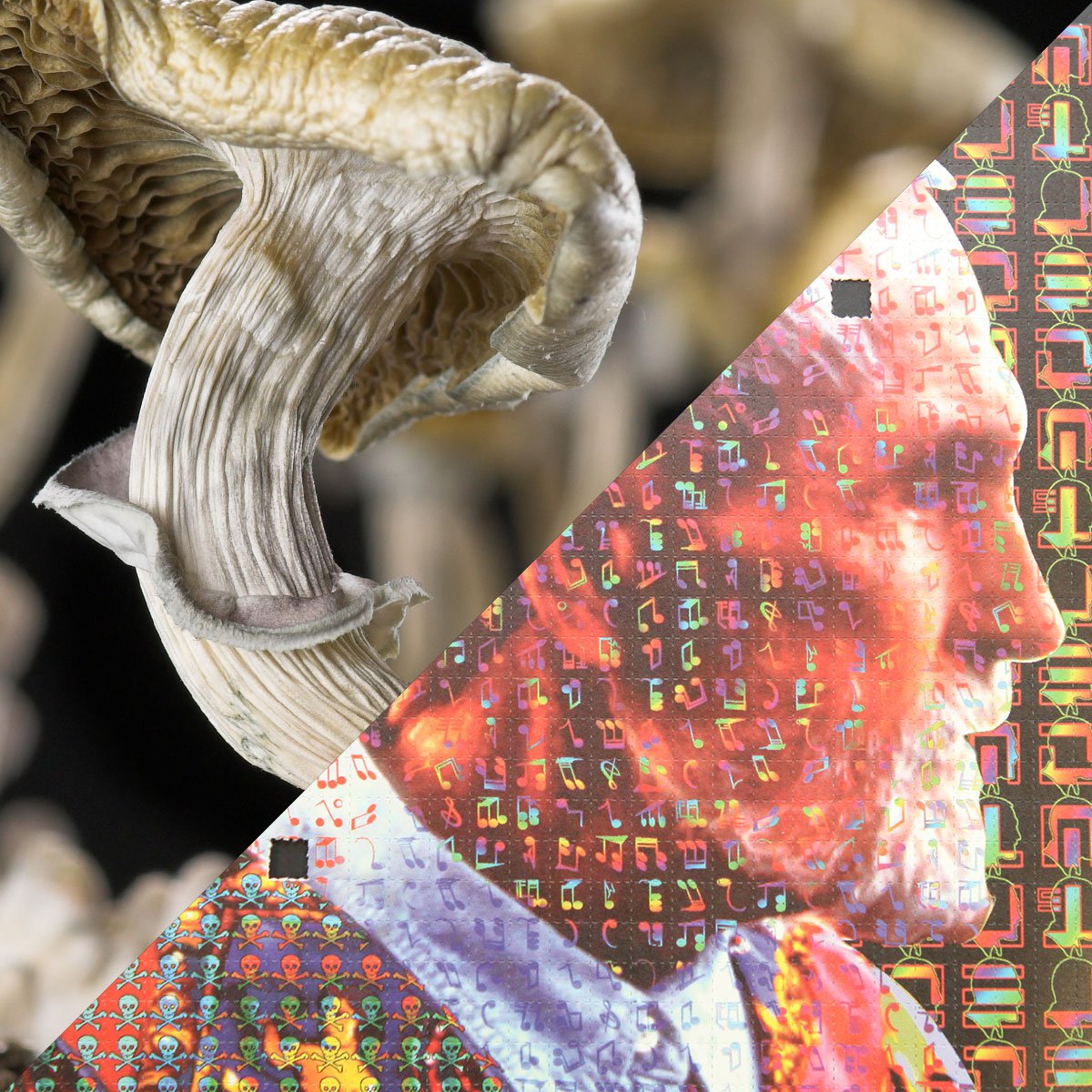Learn What Makes About Golden Psycho So Popular.
Learn What Makes About Golden Psycho So Popular.
Blog Article
All Concerning Psychotomimetic Substances: Their Function in Psychological Research
Psychotomimetic substances, such as LSD and psilocybin, have actually gathered increasing rate of interest in psychological study for their ability to duplicate psychotic signs and symptoms and provide insight into numerous psychological wellness disorders. Their interactions within the brain, specifically with serotonin and dopamine pathways, recommend a complex relationship between consciousness and neurobiology that may open novel therapeutic opportunities. As researchers continue to examine their potential applications, ethical factors to consider bordering their usage in scientific settings end up being critical, raising crucial concerns about security and notified approval that require more expedition.
Interpretation of Psychotomimetic Substances
In the realm of mental research, psychotomimetic compounds are materials that can induce impacts looking like those of psychosis, such as hallucinations, deceptions, and altered understandings of truth - About Golden Psycho. These compounds can be identified right into numerous groups, including hallucinogens, dissociatives, and specific stimulants, each creating distinctive psychological impacts
The medicinal activity of psychotomimetic compounds commonly includes inflection of natural chemical systems, especially those relevant to serotonin, dopamine, and glutamate. For example, compounds like lysergic acid diethylamide (LSD) mainly act upon serotonin receptors, leading to profound alterations in sensory assumption and cognition.
The energy of psychotomimetics in study lies in their ability to imitate psychotic signs and symptoms, offering a version for comprehending the underlying mechanisms of psychotic conditions such as schizophrenia. By researching the results of these compounds, researchers can gain insights right into the neurobiological and mental procedures that contribute to psychosis.
Furthermore, psychotomimetic compounds have been explored for their healing potential in dealing with numerous psychological wellness problems, including depression and anxiousness, highlighting their dual function in both study and possible clinical applications.
Historic Growth and Context
The exploration of psychotomimetic substances has a rich historical context that goes back to old people, where compounds such as psilocybin mushrooms and peyote were used in spiritual and healing practices. These early usages frequently intertwined with spiritual rituals, suggesting a profound respect for the transformed states of awareness generated by these compounds.
The mid-20th century noted a significant pivotal moment in the research of psychotomimetic substances, especially with the synthesis of LSD by Albert Hofmann in 1938. The succeeding popularization of LSD in the 1960s catalyzed a wave of passion in both its emotional effects and prospective healing applications. Researchers started to explore exactly how these materials can simulate psychotic states, supplying insights into mental disease.
However, the raising organization of psychotomimetics with counterculture movements caused regulatory backlash, finishing in the criminalization of a number of these substances. Regardless of these challenges, the renewal of interest in the restorative possibility of psychedelics in the 21st century has actually triggered restored study. This historical trajectory emphasizes the progressing understanding of psychotomimetic compounds, changing from sacred substances to topics of clinical inquiry and, potentially, therapeutic promise.
Devices of Action
Understanding the mechanisms of action of psychotomimetic compounds discloses the elaborate ways these substances engage with the mind's neurochemistry. These compounds mainly exert their impacts via modulation of neurotransmitter systems, specifically serotonin, dopamine, and glutamate. As an example, several timeless psychedelics, such as psilocybin and LSD, mainly serve as agonists at serotonin 5-HT2A receptors, resulting in altered understanding and cognition. This interaction not only affects sensory processing yet likewise improves psychological and introspective experiences.
In addition to serotonin, dopaminergic paths are dramatically affected by compounds like mescaline and specific cannabinoids, which can lead to transformed states of awareness and modifications in mood and motivation. In addition, the NMDA receptor antagonism observed with substances like ketamine highlights an additional pathway via which psychotomimetics might cause dissociative states and extensive alterations in assumed procedures.
The neurochemical cascades started by these interactions result in complex and complex mental effects. Understanding these systems is crucial for both the innovation of psychological study and the healing possibility of psychotomimetic substances, as they provide understandings into the underlying neural correlates of altered states of awareness.
Current Study and Applications
Current examinations into psychotomimetic compounds have actually revealed a resurgence of rate of interest in their therapeutic applications, especially in the areas of psychiatry and psychology. Researchers have started discovering materials such as psilocybin, LSD, and ayahuasca for their potential to minimize symptoms associated with numerous psychological health and wellness problems, consisting of clinical depression, stress and anxiety, and PTSD.
Medical trials have demonstrated that, when provided in regulated atmospheres, these substances can assist in extensive mental experiences, promoting psychological developments and enhanced therapeutic end results. Research studies have actually revealed that psilocybin-assisted treatment can lead to significant decreases in treatment-resistant anxiety, with impacts lasting for several months post-treatment.
Moreover, psychotomimetic substances are being evaluated for their capacity to cultivate neuroplasticity, possibly enabling even more reliable rewiring of maladaptive thought patterns. These findings suggest that such compounds might work as accessories to typical psychotherapeutic techniques, enhancing the efficacy of therapeutic treatments.
As research study progresses, the focus is changing towards comprehending the read this optimum does, restorative settings, and participant attributes that can take full advantage of the advantages of these substances. This blossoming area holds promise for reinventing psychological wellness treatment paradigms and attending to the restrictions of traditional psychological medications.
Ethical Considerations in Research

Browsing the honest landscape of study entailing psychotomimetic compounds is vital to making certain participant security and the honesty of research end results. Scientists have to focus on enlightened authorization, making certain that individuals completely recognize the possible dangers and advantages connected with the substances being researched. This consists of giving in-depth details regarding possible psychological effects, including severe and long-lasting effects, and permitting individuals the opportunity to take out from the research study any time scot-free.
Moreover, honest oversight by institutional evaluation boards (IRBs) is essential. IRBs examine research study procedures to protect participant well-being and support moral criteria. This analysis assists minimize risks and makes sure that researches are carried out with scientific roughness. Furthermore, the possibility for threat must be very carefully assessed, particularly when vulnerable populaces are involved.
Privacy is one more critical factor to consider. Researchers must carry out durable actions to shield participants' identities and data, especially given the sensitive nature of experiences related to psychotomimetic compounds (About Golden Psycho). Ultimately, a commitment to ethical methods not only promotes count on between researchers and participants however likewise enhances the trustworthiness visit this page and legitimacy of the research outcomes, contributing to the improvement of mental expertise

Final Thought
Finally, psychotomimetic substances, especially traditional psychedelics such as LSD and psilocybin, offer substantial understandings into mental problems with their special mechanisms of activity. Their restorative possibility in attending to conditions like anxiety and PTSD emphasizes the relevance of continued research study in this field. Making sure honest standards in research study practices is critical for individual safety and security and educated approval, enabling for a responsible exploration of these substances' advantages and ramifications navigate to these guys within mental scientific research.
Report this page